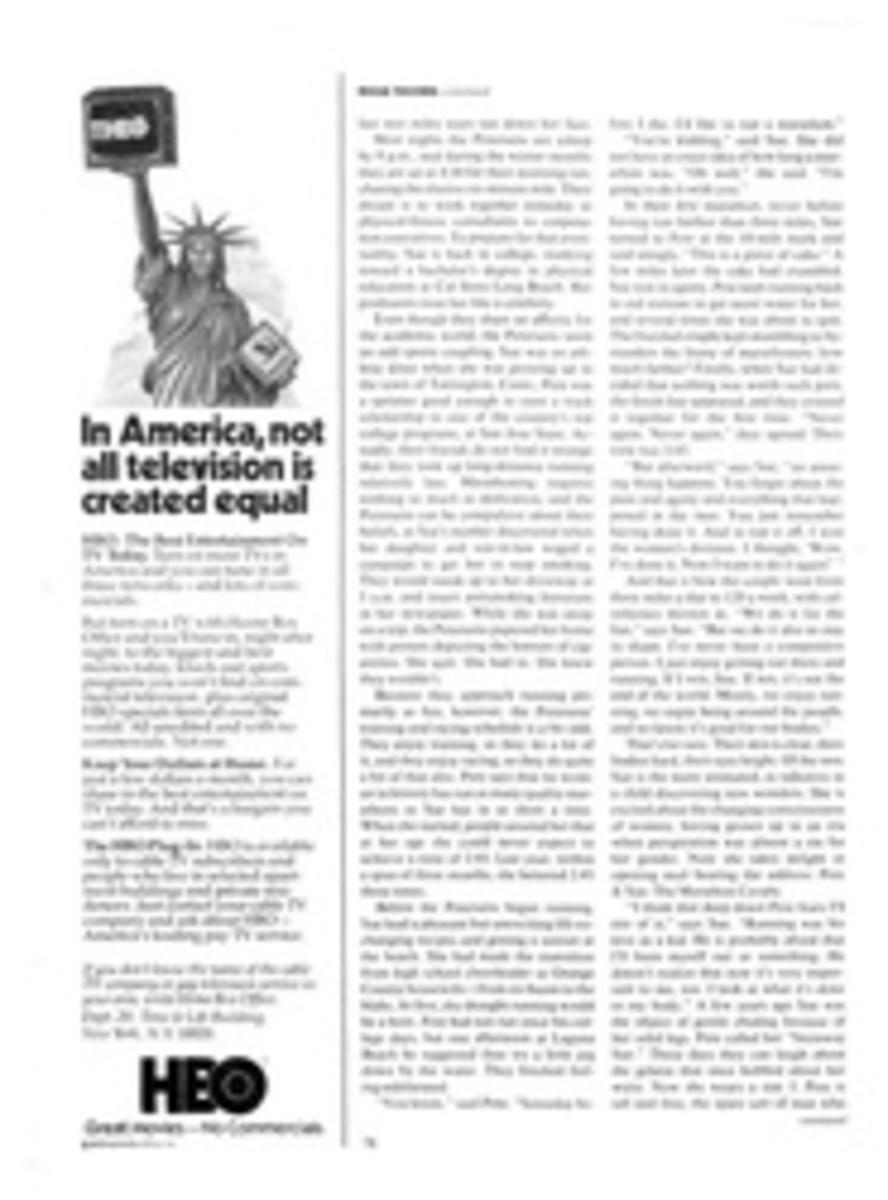
FRIDTJOF NANSEN SKIED 150 RUGGED MILES TO JUMP OFF A HILL IN OSLO
In later years, Norway's Fridtjof Nansen would gain fame as a polar explorer and as the winner, in 1922, of the Nobel Peace Prize. In the winter of 1884, when he was 22 years old, he got a foretaste of treks to come. He decided to enter the annual Huseby Hill ski jump. There was one hitch—Huseby Hill was in Oslo (then Christiania), and Nansen was in Bergen, 215 miles away.
From the sour descriptions penned in his diary, winter in Bergen can be mighty disagreeable. On the day Nansen read of plans for the Huseby Hill meet in his newspaper, Bergen was lashed by heavy rains, which, he wrote, achieved a "violence unusual even in this rain-ridden town." That was Saturday, the 26th of January. On Sunday the wind and rain intensified. As Nansen looked out at the swamped, dreary streets, he imagined the "pine forest...white beneath its mantle of snow, the countryside...glittering in the sun."
The jump at Huseby Hill was scheduled for Feb. 4, eight days away. Impetuously, Nansen decided to go, and to travel the only way he could on such short notice, mostly by ski.
He took a leave of absence from the National Museum of Bergen, where he was a natural-history curator, and left Monday morning on the 6:30 train. The tracks went no farther than Voss, only 50 miles distant. As the crow flies, Oslo and Huseby Hill still were 165 miles away.
Nansen intended to follow the crow's flight, due east from Voss across the high Hardanger glacier to Hol at the head of the Hallingdal Valley. But he was dissuaded by those he consulted; they insisted it was folly to cross the Hardanger in winter.
Instead, he detoured north. He didn't find snow firm enough to ski on, so he hiked along a post road, accepted a lift aboard a horse-drawn sleigh and stayed over in Vinje, 10 miles from Voss.
That night it snowed, and the next morning he set off in high spirits. 'This was real winter," he wrote, "winter in all its glory." For company he had his dog, an Irish setter named Flink—in Norwegian, the word means "clever." But he complained about not meeting other skiers out on such an excellent morning and concluded that the region's inhabitants must be an indolent sort, content to sleep away the winter.
Clipping off the miles and feeling fine, Nansen slowed his pace to try a practice jump. He climbed above the lip of a hillside and swooped down. "That did one good." he thought. "It made one feel a bit nearer heaven." He shucked his rucksack, climbed higher and made a longer, loftier flight. A few farmers appeared to watch the tall, blond skier perform. He cadged a drink of milk and asked them how far it was to Gudvangen.
"Going over the mountains, then!" one farmer said, but he seemed more impressed by Nansen's fine skis than by the length of his journey.
Across the mountains it was, to the steep plunge below Stalheim. Waterfalls spilled over the edge of the gorge, and the road angled down the side of the mountain in a series of cramped curves and switchbacks. Nansen pushed off and reached an exciting speed, skirting the brinks and braking before each curve. Halfway down he passed a farmer who flattened himself against the hill as Nansen swept by, closely followed by a brown ball of fur also speeding downhill.
Over flat valley terrain Nansen skied on to Gudvangen, and there he boarded the last postal steamer up the Nõrö and Aurland fjords to Laerdal, where he spent the night.
Early on Wednesday morning he headed east up the Laerdal Valley. Starting again from sea level, he found the snow thin, and for several miles he carried his skis. Not as steep as the gorge below Stalheim, the Laerdal was nevertheless susceptible to avalanches. At noon Nansen stopped by a stream for lunch. He took a pad from his pack and began to sketch, thinking this would be a fine spot to return to in spring for some fishing.
A passing farmer hauling a toboggan interrupted his thoughts. "You're out of your wits, man," he shouted, "to sit under the avalanche!"
"No particular danger, is there?"
"I should say so," the farmer warned, and hurried on.
Nansen resumed sketching until another farmer, on horseback, shouted the same warning. The place he had chosen for a picnic was at Saue's Wedge, the site of the area's worst avalanches.
Packing away his pad, Nansen moved on, able to ski as he gained altitude. He put in a long afternoon, skiing past Huse and climbing the Vindhellen Road to a ridge from where he could sec the Borgund Valley and the stave church in the town of Borgund.
Daylight was gone when he reached Burlo, and in the lingering Nordic twilight he began climbing the long, steep flanks of the Filefjeld range. This was the heaviest going yet and Nansen was fatigued, but he was determined to spend the night in Breistölen. He crested the Filefjeld under "pale and uncertain starlight...the valleys shrouded in darkness." On Christmas the year before he had skied these same slopes, in a storm so furious he was forced to remove his skis to make headway; even his dog had whimpered from the cold. Now the air was still and the snow fast, and he and Flink had good running down to Breistölen. He drank some milk and went straight to bed.
His tracks the next morning, Thursday, seemed hardly those of a man with a mission to reach Oslo. The natural route lay southeast, through the Morkdalen Valley to Bjöberg and Hemsedal, to Gol and the Hallingdal Valley. Nansen, however, pointed his skis back over the Filefjeld, picking a long, roundabout path to Bjöberg. "Not exactly a shortcut," he acknowledged, "...but I wanted to ski and the main thing was to find good hills."
Pushing it, he made Bj‚Äö√†√∂‚Äö√†√áberg by the more challenging trail at midday and fell in with two hunters tarrying there. They invited him to share a sumptuous lunch—reindeer, which had been preserved in snow since autumn, washed down with a potent succession of beer, brandy, claret and sherry. Coffee and cigars followed, and then old Knut Bj‚Äö√†√∂‚Äö√†√áberg, an innkeeper hospitable to a fault, brought up from the cellar his best bottle of Cura‚Äö√†√∂‚àö√ºao.
Nansen pronounced the meal and the company "entirely delightful," though he had broken a personal rule against drinking alcohol and smoking tobacco when he had far to go. Regaining a sense of purpose, he resisted entreaties to stay and hunt grouse, and wobbled off at dusk down the Hemsedal Valley.
Late getting to Tuf, he met a party of horse traders, a society less sporting than hunters. The traders' game was cards and they pressed him to join them. Foreseeing trouble, Nansen bargained instead to hire a horse and rode on to the Kleven postal station, arriving well past midnight and lucky to find a bed. Kleven, too, was full of horse dealers.
He was gone next morning at nine, skiing hard down slopes where spruce and pine grew, and across pastures where saeters—farmers' huts—lay nearly buried by snow.
At midmorning he reached Rolfshus. He had gone 10 miles, and at that rate, he calculated, he could make it all the way to Gulsvik, another 40 miles, by day's end. He entered the Hallingdal, the valley that cradles the tracks of today's Oslo-Bergen railway—completed in 1904—and made Nesbyen in time for an early-afternoon dinner and an hour's rest. Refreshed, he took to the trail again. Snow was falling but he was skiing well, and he and Flink were in Gulsvik late that night.
Saturday's run looked easy—20 miles down Kr‚Äö√†√∂‚Äö√†√áderen Lake to Olberg and another few miles for a train connection to Oslo. Nansen approached the lake and found ideal conditions. The ice was smooth and dusted with new snow. Settling into the relaxed rhythm of a long-distance skier, kicking and then gliding, he skied into Ringnes at noon and Olberg an hour after that. Weakening at last, he hired a sleigh to get him to the train on time.
With Flink in tow, Nansen arrived in Oslo that evening. Taking into account train rides at either end and passages by steamer and hired sleigh, he had skied about 150 miles in six days.
On the seventh day he got some rest, and on Monday he entered the Huseby Hill meet, forerunner of today's Holmenkollen competitions. He placed ninth. The Norwegian Sports Journal reported, "Fridtjof Nansen entered again this year. While he exhibited the same beautiful style as before, he did not seem to be in top form."
The meet at Huseby Hill was Nansen's last competition. After that, other goals occupied his thoughts, foremost among them a scheme to ski across Greenland, which he did in 1888. Nansen questioned the value of competitive skiing. "The purpose of sport," he later wrote, "should be to develop and strengthen the body and the soul, while taking us out into nature. But many of our sportsmen have become muscle machines, race horses who...strive to break records and come in a few meters ahead of their fellows."
At the time, however, his foremost concern was the matter of returning home. Nansen packed his rucksack, strapped on his skis, whistled up Flink—and skied back to Bergen.
MAP
NORWAY
BERGEN
OSLO
BERGEN
VINJE
VOSS
LAERDAL
BREISTOLEN
KLEVEN
GULSVIK
OSLO
1
2
3
4
5
6

